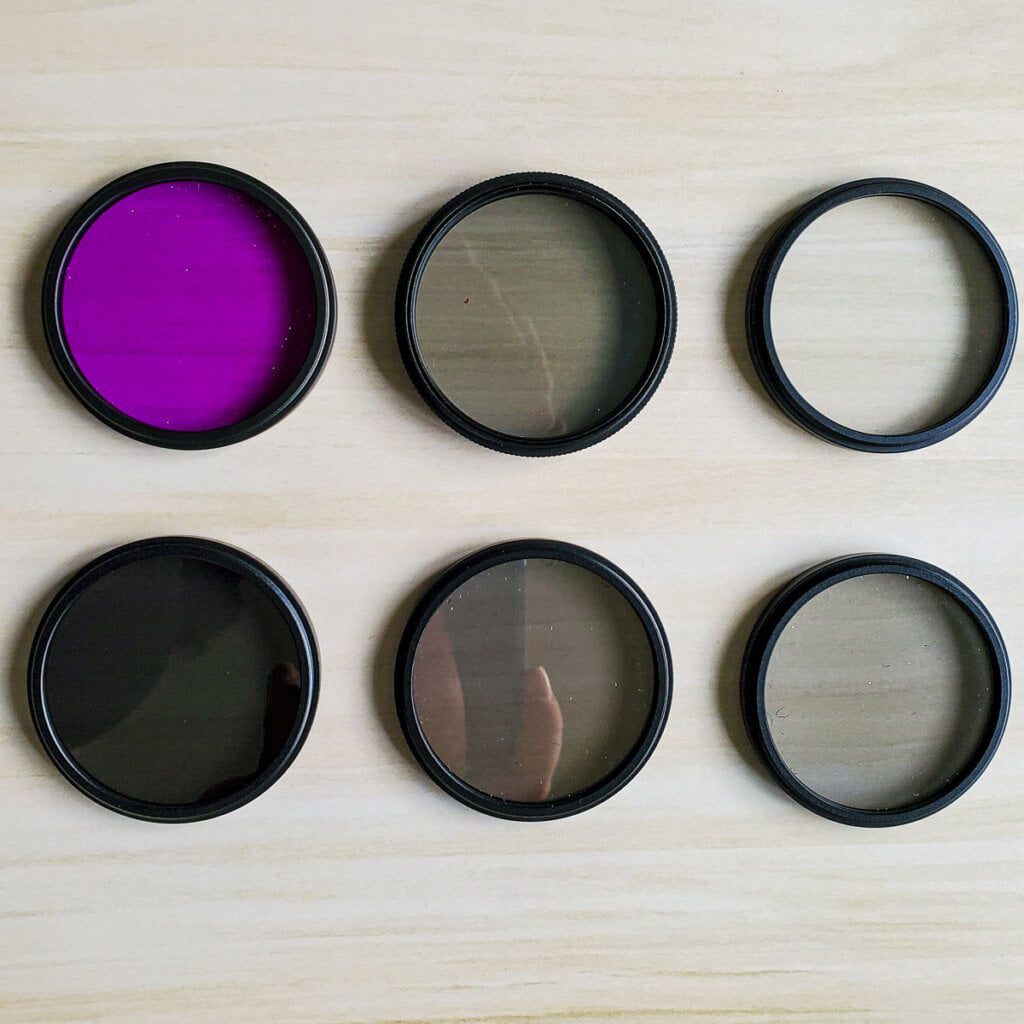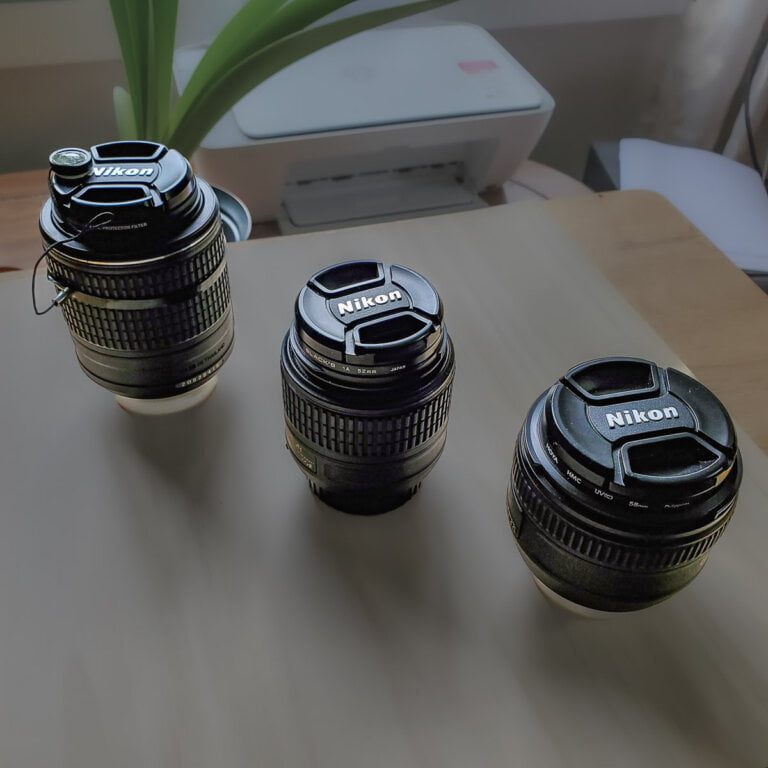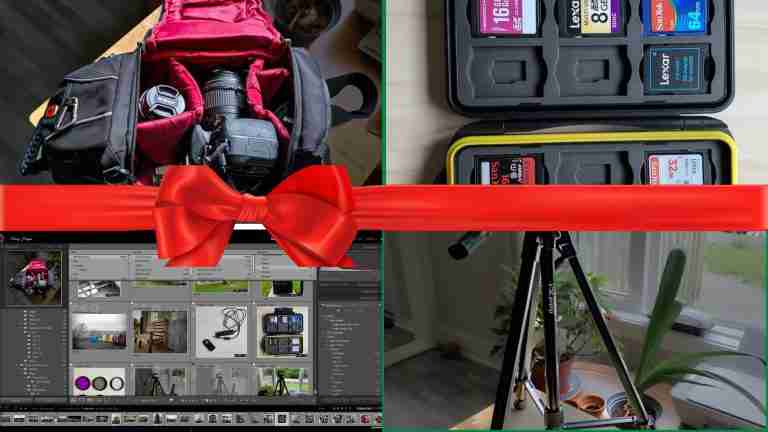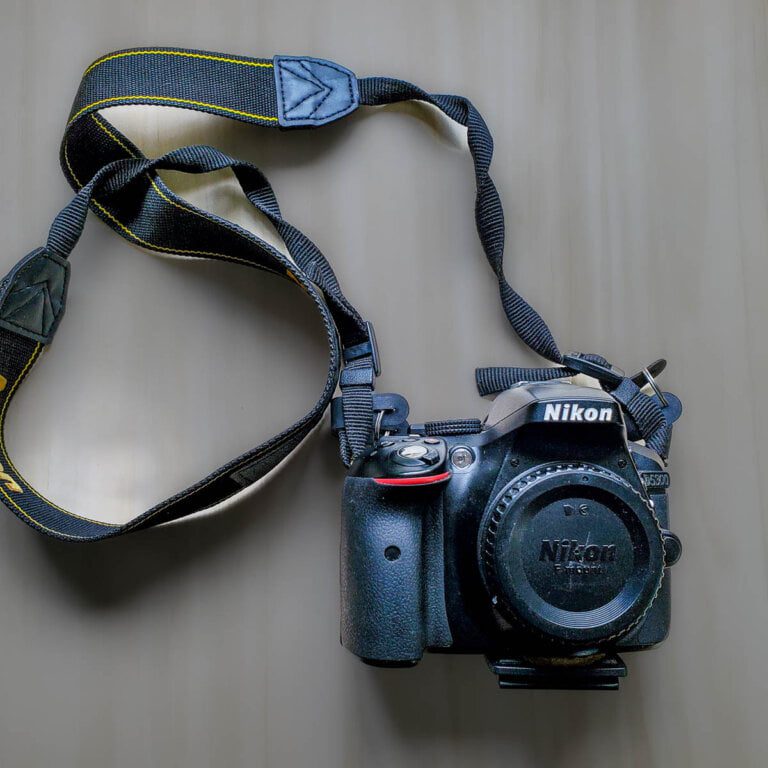Essential Photography Equipment for Beginners: What You Need to Get Started
Hey there Shutterbug, just wanted to let you know that some of the links on this site may be Amazon Affiliate or affiliate links,. which means I may earn a small commission if you make a purchase after clicking on them. But don't worry, it won't cost you any extra – in fact, sometimes you may even get a special discount! So if you do decide to buy something through my links, know that you'll be supporting my work and helping me bring more helpful content your way. Thank you for your support, you're like a superhero to my work! I couldn't do it without you, unless I suddenly develop the ability to clone myself...which, honestly, would be pretty cool.
When it comes to photography, having the right photography equipment is essential. However, with so many options out there, it’s easy to get overwhelmed. In this post, I’ll guide you through the essential gear and equipment you need to get started, such as cameras, lenses, tripods, and memory cards. I’ll also explain what to look for when buying your gear, and how to get the most bang for your buck.
Hey, fellow photography enthusiasts! Today, we’re diving into the awesome world of photography gear – you know, the stuff that can turn your pics from meh to mesmerizing! Having the right gear is like having a secret sauce for your shots, and I’m here to spill the beans on the essential ingredients.
Picture this: your camera is like your trusty sidekick, and the lens is your partner in crime. But to really rock that photography game, you’ll want a tripod for steady shots, memory cards to stash your masterpieces, and a slick camera bag to keep it all safe and sound. So, whether you’re a newbie or a gear guru, stick with us as we dish out the lowdown on must-have photography equipment. Get ready to capture moments like a pro!
Cameras and Lenses
Different camera types

Alrighty, time to unravel the mystery of cameras, my curious friend! Let’s start with the big players: DSLRs, the rockstars of photography. These babies are like the superheroes of cameras, with their swappable lenses and manual controls that let you tweak every detail. They’re your go-to if you’re craving total creative control and top-notch image quality. Think of them as the master chefs of the photography world, whipping up gourmet shots with precision and flair.
Now, meet the cool cats in town – mirrorless cameras. These bad boys ditch the bulky mirror mechanism found in DSLRs, making them more compact and lightweight. They’re like the tech-savvy rebels, offering a blend of performance and portability. Plus, they often come with snazzy features like electronic viewfinders and super-fast autofocus. If you want high-quality snaps without weightlifting, mirrorless might just be your jam.
Last but not least, we’ve got the point-and-shoot pals. These are like friendly neighbourhood photographers, always ready to capture the moment without any fuss. They’re compact, easy to use, and great for everyday shots. Think of them as your trusty sidekick for spontaneous snapshots. While they might not have all the bells and whistles of the big shots, they’re perfect for those candid moments when you just want to snap and go.
So there you have it, the scoop on camera types! Whether you’re a pro looking for ultimate control, a traveller seeking lightweight power, or a snap-happy explorer, there’s a camera type out there just for you. Time to choose your photography sidekick and start capturing those memories!
READ MORE >> The Top 6 Types of Cameras: A Comprehensive Guide to Choosing the Right One for Your Photography.
Overview of lens types and focal lengths

Alright, let’s decode those lens millimetre (mm) ranges and put you in the lens-know! Lenses are also referred to as glass and have a specific focal length measured in mm. Focal length is like the lens’s way of saying “Hey, this is how much of the world I can fit into a single shot!”
Say hello to the wide-angle lens, usually somewhere in the ballpark of 10mm to 35mm. These bad boys are all about fitting in the big picture – from capturing the entire majestic mountain range to squeezing in your entire squad of friends without anyone feeling left out.
Zoom lenses, on the other hand, are like the shape-shifters of the lens world, with a range that can go from, let’s say, 18mm to 200mm (or even more!). They’re the all-in-one package, letting you zoom in for those intimate moments or zoom out to get up close and personal with distant subjects, like that bird perched on a faraway branch.
Now, let’s talk prime lenses. These folks are all about rocking a fixed focal length, like a trusty 50mm. They’re like the pros of portraits, giving you that beautiful background blur (a.k.a. bokeh) and stunning sharpness. Picture your subject looking oh-so-clear while the background melts into a creamy, dreamy haze.
So, from wide-angle wonders to zoom-tastic champs and bokeh-filled primes, each lens type and mm range is like a unique flavour in the photography buffet. Pick your favourite dish and start savouring those stunning shots!
Factors to Consider When Choosing a Camera and Lens
Choosing the perfect camera and lens combo is like picking the right adventure buddy – they match your style and goals. Think about your photography journey – landscapes, portraits, or fast-action? Subjects guide your camera choice. Need flexibility? Go for a versatile zoom lens. Craving dreamy blur? Say hi to a prime lens for crispness.
Size matters – bulky DSLR or nimble mirrorless? And budget talk – cameras and lenses have varied prices, so balance features and costs.
Now, the camera body – your core gear. Buying one is joining an exclusive photo club, and lenses? They’re codes to club sections. Each camera system has unique lenses, opening doors to various photo worlds – wide angles, zooms, and more. Before sealing the camera deal, consider available lenses. Like picking a dance partner, harmony between body and lens creates your masterpiece. Get ready to compose your photographic symphony!
READ MORE >> Parts of Your Camera | Quickly Dominate all 43 Small Parts
Tripods and Camera Bags
Importance of Stability and Support for Taking Sharp Photos

Imagine trying to draw a straight line while riding a roller coaster – that’s what it’s like to capture sharp photos without stability and support. Those little shakes or jitters can turn your masterpiece into a blurry mess. Tripods, stabilizers, and even solid surfaces are like your photography anchors, keeping your camera steady for crystal-clear shots. So, if you want your images to pop with crispness, stability is your photography best friend!
Different Tripod Types and Materials
Tripods, my photo-loving pals, are like the rock stars of stability in photography. We’ve got three main types to choose from: first up, the classic tripod with three legs, perfect for steady shots. Then there’s the travel-friendly monopod, like a loyal sidekick for on-the-go photographers. And let’s not forget the versatile Gorillapod – it’s like a tripod with a twist, with flexible legs that can wrap around objects for unique angles.
Now, let’s talk materials. Tripods come in different flavours, like a menu for your gear. You’ve got aluminum, sturdy and budget-friendly. Carbon fibre is lightweight and strong. And if you’re feeling fancy, there’s even wood for that vintage vibe. Each material has its perks, so think about where you’ll be snapping those shots and pick the one that suits your photographic taste. Whether you’re a tripod traditionalist or a Gorillapod adventurer, these stabilizing sidekicks are your ticket to picture-perfect stability! (Pun intended)
A MUST-have for your photography equipment kit.
Camera Bag Types and Features

Camera bags, the unsung heroes of photography equipment, come in various flavours to cater to your gear-hoarding needs. Starting with backpacks – the ultimate all-in-one solution. They snugly cradle your camera body, lenses, and even a laptop, making them a travel-friendly favourite. Then, there’s the shoulder bag – a stylish companion for quick-access essentials, akin to a camera purse that combines fashion with function.
Now, let’s unveil the treasure map for your bag-hunting adventure. Size is your North Star – consider your photography equipment lineup and envision a snug yet spacious haven for your gear. Protection is the fortress – padded dividers and weather-resistant materials shield against unexpected bumps and drizzles.
Pockets, oh sweet pockets – they’re your saviours of organization, housing memory cards, batteries, and those elusive lens caps. Ergonomics is the path to comfort – adjustable straps and padded back panels ensure your bag won’t turn into a backbreaker during your photography escapades. So, when you embark on the quest for the perfect camera bag, remember these guiding stars and your gear will journey in style and safety!
READ MORE >> Parts of Your Camera | Quickly Dominate all 43 Small Parts
Accessories and Other Gear
Additional Photography Equipment


Crafting the best photography equipment kit opens the door to a world of captivating accessories that can elevate your game. Amid the dazzling array of options, let’s shine a spotlight on a trio of essentials: filters, external flashes, and remote triggers. These gems have the power to transform your shots, adding that extra spark to your visual storytelling.
Filters, those magical accents for your photography equipment, come in all sorts – polarizers to cut glare, ND filters for dreamy long exposures, and UV filters for protection. Consider your shooting style and environment when picking filters – they’re like sunglasses for your camera lens, adding that extra oomph to your shots.
External flashes, the heroes of lighting in photography equipment, can banish harsh shadows and add a pop to your subjects. Think about compatibility with your camera, power options, and adjustability – your lighting partner should match your creative vision.
Remote triggers, the unsung conductors of photography equipment orchestras, let you snap shots without touching your camera. Whether wired or wireless, they grant you hands-free control for those perfect self-portraits or capturing shy wildlife. Prioritize compatibility and range when picking a remote trigger to ensure seamless control over your visual symphony.
Memory Cards and File Storage Options

Welcome to the backstage of photography, where memory cards and file storage options play the vital role of safeguarding your visual treasures. These often-overlooked heroes of photography equipment ensure that every shot finds a secure home and remains ready for your artistic touch. So, let’s dive into the world of memory cards and file storage, exploring how to choose the best companions for your photographic journey.
Memory cards, another unsung hero of photography equipment, store your visual treasures. Choose wisely by balancing capacity and speed – faster cards for rapid-fire shots and larger ones for extensive storage. Your camera’s compatibility is the key, so ensure your memory card dance partner matches your camera’s moves.
File storage options are like a treasure chest for your photography equipment gems. Hard drives, SSDs, and cloud storage are your allies in preserving memories. Prioritize ample capacity and reliable backup to safeguard your precious creations. Remember, your storage solution is the guardian of your visual legacy.
Where to Purchase Photography Equipment
You can purchase photography equipment from various sources, including:
- Camera Stores: Specialized camera shops offer a wide range of photography gear and accessories.
- Online Retailers: Websites like Amazon, B&H Photo Video, and Adorama provide a vast selection of equipment.
- Local Electronics Stores: Some large electronics retailers carry photography equipment.
- Manufacturer Websites: Brands like Canon, Nikon, Sony, and others have their own online stores.
- Second-Hand Markets: Explore platforms like Facebook Market Place, eBay, Craigslist, or local camera clubs for used gear.
- Photography Trade Shows: Attend industry events where manufacturers showcase and sell their products.
- Photography Workshops: Some workshops offer equipment sales as part of their events.
Prioritize thorough research by comparing prices, reading reviews, and evaluating options before committing to a purchase. Embrace the idea of exploring second-hand options fearlessly (I did); not only can it lead to more budget-friendly deals, but it also provides an excellent opportunity to learn about your photography equipment and decide on a long-term system that suits you best.
To Sum it All Up Here is a Shopping List:
Alright, let’s break it down – here’s your shopping list for essential photography equipment for beginners to kick-start your creative journey:
- Camera Body: Your canvas for creativity – choose a DSLR, mirrorless, or point-and-shoot to suit your style.
- Lenses: Start with a versatile kit lens (usually the one the camera comes with). As you progress, consider adding a prime lens for beautiful bokeh and a wide-angle lens for sweeping landscapes.
- Memory Cards: Grab high-capacity, high-speed memory cards to store your visual treasures.
- Tripod: A stable foundation for steady shots. Pick one that aligns with your photography style.
- Camera Bag: Keep your gear safe and organized with a well-padded camera bag. Start with a smaller bag if that is all your budget allows, you can upgrade later.
Begin by embracing these core essentials and watch your photography equipment collection evolve alongside your skills, adapting to diverse genres. The foundation of quality gear promises lasting creative exploration. Venture forth as a savvy shopper, my photography adventurer!
Remember, as you become one with these essentials, the world of filters, external flashes, remote triggers, and more eagerly awaits to amplify your photographic finesse. Happy shopping and even happier snapping.
READ MORE >> How to Take a Photo: Picture Perfect in 14 Steps
Have anything to add to this list? Comment below.
If this helped you please share it with your friends. If you want more content delivered to you directly sign up for the newsletter and comment below if you have any questions or comments.
F.A.Q
What equipment is needed to be a photographer?
To be a photographer, you need essential equipment like a camera body, lenses, memory cards, and a tripod.
Which device is best for photography?
The best device for photography varies based on preferences, but DSLRs and mirrorless cameras are popular choices.
What camera do most photographers use?
Most photographers use a range of cameras from DSLRs to mirrorless models.
What equipment do you need for commercial photography?
Commercial photography often requires additional gear like studio lights, backdrops, and props.





